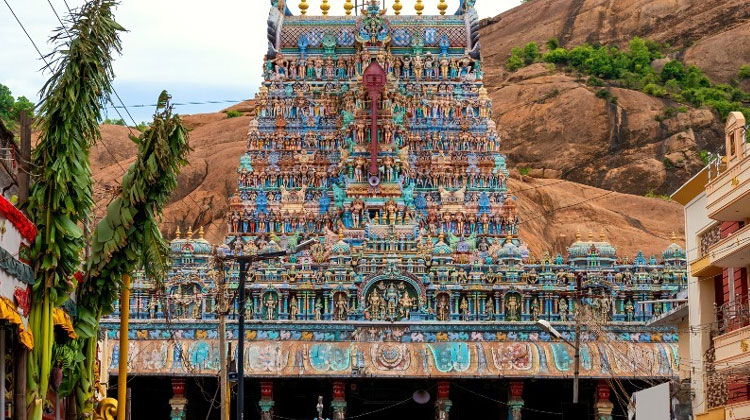- Home
- Madurai Specials
- Thiruparankundram Temple
Thiruparankundram Temple

Thiruparankundram Temple
The Sangam-era work Tirumurukatruppatai is a revered devotional poem that mentions six shrines dedicated to Lord Murugan, with the first being Thiruparankundram. This poem holds immense significance, not only for devotees of Murugan, for whom it is regarded as the most ancient and foundational text, but also for all Saivites. The Tamil Saiva saint (Nayanmar) Thirugnana Sambandar is believed to have visited this temple.
A separate rock-cut cave temple dedicated to Lord Shiva exists nearby at the foot of the hill, dating to 7th or 8th century CE. Kasi Viswanathar temple is at the top of the hill. In the month of May, the golden spear (Vel), a sacred symbol of Lord Murugan, is ceremonially taken from the Murugan temple to the holy water tank at the top and then returned. Macchamuni Siddhar is said to have attained jeeva samadhi here.
At the top of the hill, two natural caverns contain rock beds believed to have been used by Jain ascetics. One of the beds bears a Tamil-Brahmi inscription dating back to the 1st century BCE. This site is maintained by the Archaeological Survey of India (ASI).
One theory suggest that the Murugan temple existed much before the 6th century, and was converted into a Jain shrine by Jain monks under the aegis of Pandya king Koon Pandiyan. The temple was later converted into a Hindu temple under the tutelage of Gajapathy, the minister of a later Pandya King, during the latter part of the 8th century. The temple received several additions during the regime of Madurai Nayaks, who commissioned the pillared halls in the temple.
Dont forget to taste our delicious " Madurai Famous Jigarthanda " during your visit to Thiruparankundram Temple at one of our ORIGINAL FAMOUS JIGARTHANDA retail outlets which is running since the year 1977.

